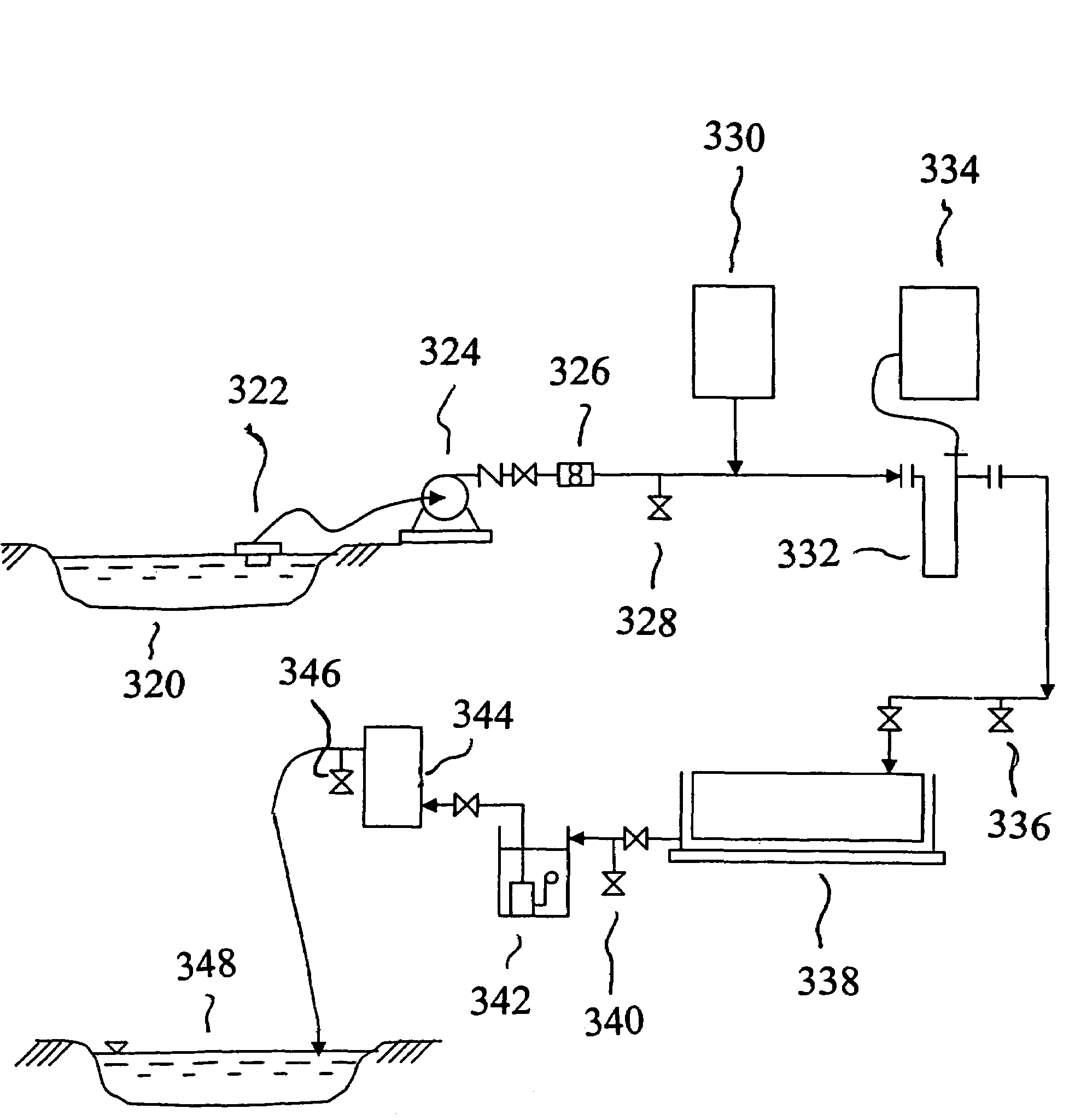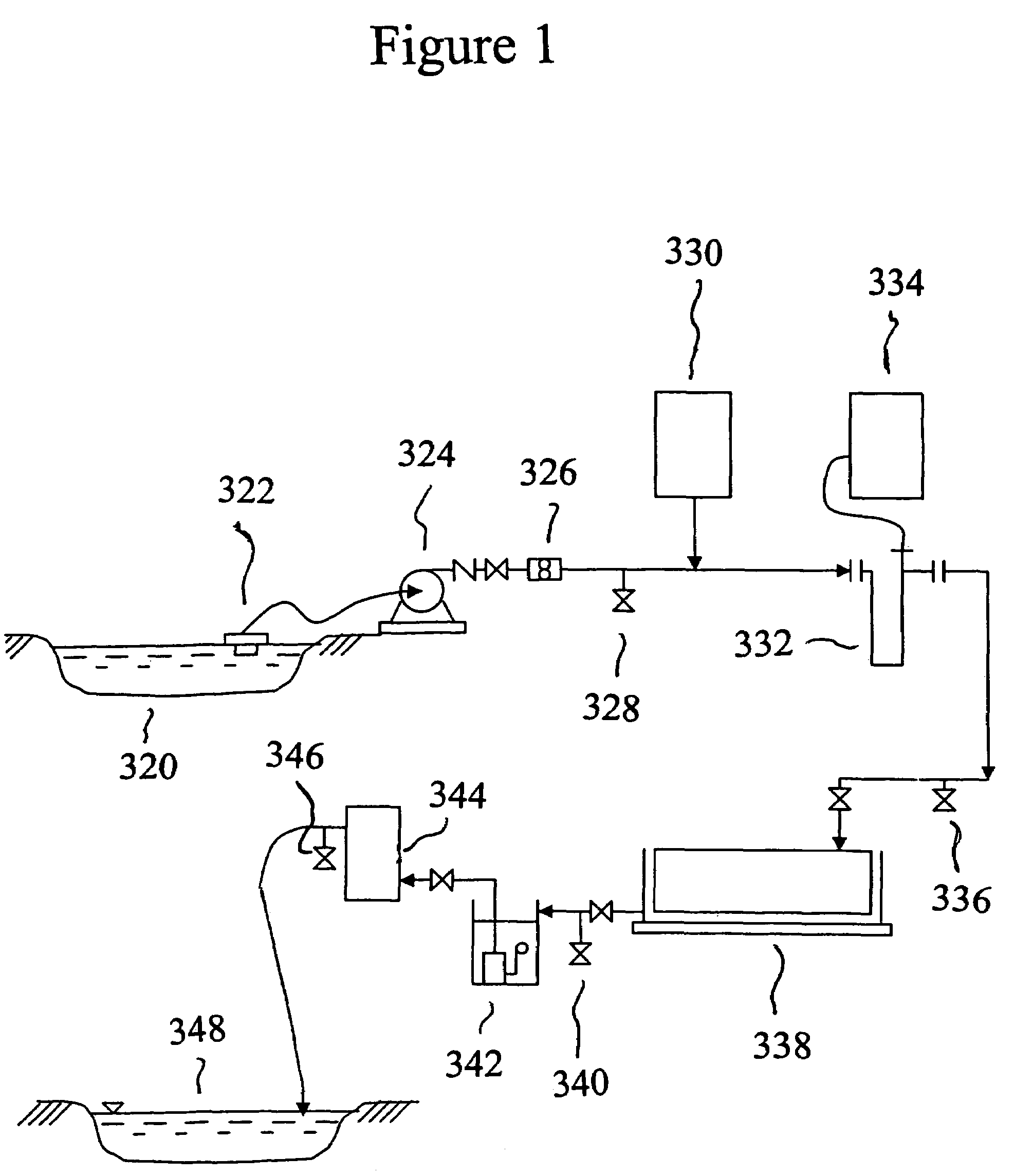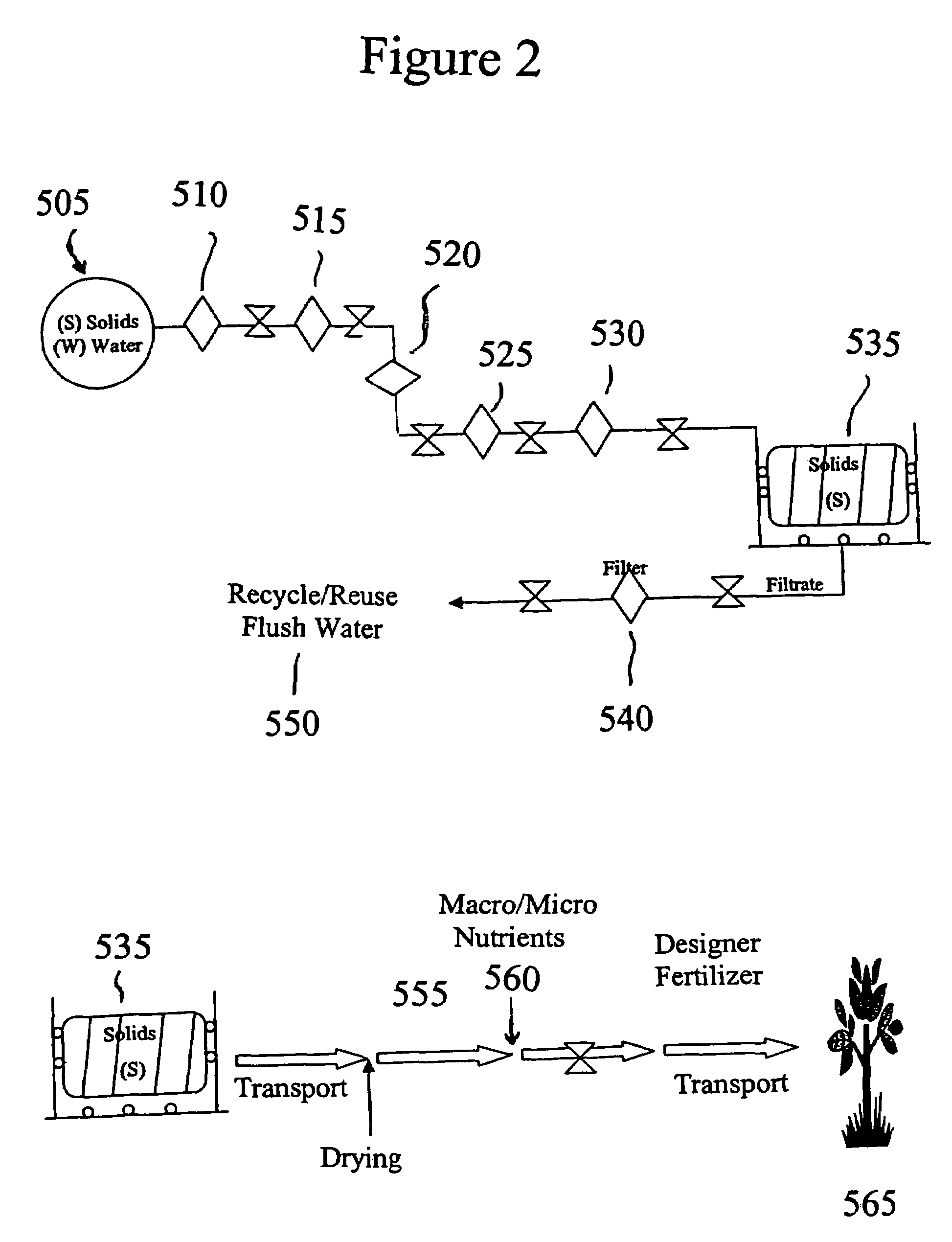Animal waste effluent treatment system
a treatment system and animal waste technology, applied in water/sewage treatment by flotation, electrostatic separation details, sedimentation separation, etc., can solve the problems of microbial sludge solids resulting from conventional municipal sewage treatment, high transportation and disposal costs, and the major disposal problem. , to achieve the effect of low energy
- Summary
- Abstract
- Description
- Claims
- Application Information
AI Technical Summary
Benefits of technology
Problems solved by technology
Method used
Image
Examples
Embodiment Construction
[0028]Shortcomings in the previously known art are alleviated by devices, systems, methods and other discoveries that reduce odor, reduce undesirable microbes such as anaerobic bacteria, and more efficiently convert a wet sludge into a more transportable form, while incurring relatively low energy expenditure. Embodiments are useful particularly for treating sludge that contains microbes such as fecal matter, and more particularly for highly concentrated waste material such as wet suspensions, typically between 0.5 and 10% weight to volume of chicken, turkey, bovine, ovine, human or other fecal waste. The diverse embodiments described herein combine the discoveries in useful systems, methods and / or devices. However, a skilled artisan readily will appreciate that each discovery may be used independently in further embodiments that will be appreciated upon reading the specification.
[0029]In keeping with the large scale, low cost goal of the sludge remediation process, a flow system wa...
PUM
| Property | Measurement | Unit |
|---|---|---|
| temperature | aaaaa | aaaaa |
| output powers | aaaaa | aaaaa |
| output powers | aaaaa | aaaaa |
Abstract
Description
Claims
Application Information
 Login to View More
Login to View More - R&D
- Intellectual Property
- Life Sciences
- Materials
- Tech Scout
- Unparalleled Data Quality
- Higher Quality Content
- 60% Fewer Hallucinations
Browse by: Latest US Patents, China's latest patents, Technical Efficacy Thesaurus, Application Domain, Technology Topic, Popular Technical Reports.
© 2025 PatSnap. All rights reserved.Legal|Privacy policy|Modern Slavery Act Transparency Statement|Sitemap|About US| Contact US: help@patsnap.com



